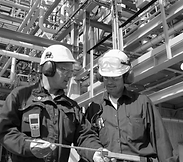Engineering and Technology Quarterly Reviews
ISSN 2622-9374




Published: 25 November 2023
Computational Investigation on Flow and Power Output of Solar Chimney Power Plants by Changing Collector Entrance Geometry
Mahmut Kaplan
Naci Topcuoglu Vocational High School, Turkey

Download Full-Text Pdf
10.5281/zenodo.10203408
Pages: 39-48
Keywords: Solar Chimney, CFD, Collector Entrance Height, Maximum Velocity, Pressure Drop, Power Output
Abstract
The use of fossil fuels for generating power has leaded to the reduction of fossil fuel resources and many adverse influences involving climate change and environmental pollution. Solar energy has a potential to provide eco-friendly energy with a great energy supply for producing heat and electricity. Basic parts of the system are the collector, chimney and turbine. The collector is a vital component of the system and its geometrical features noticeably influence the power plant efficiency. In the current work, a three dimensional computational fluid dynamics (CFD) simulation of a SCPP based on the Manzanares prototype is performed to scrutinize the impact of collector entrance height (He) ranging from 0.75 m to 2 m on the solar chimney power output. Computational model is developed by employing RNG k-ε turbulence and discrete ordinates (DO) coupled with solar ray tracing models through ANSYS Fluent software. The model is validated using measured data published in the literature. The numerical results reveal that reducing He improves maximum velocity (Vmax), power output and pressure difference in the turbine at the expense of decreasing air mass flow rate. The highest velocity of 19.45 m/s is achieved with He = 0.75 m and Vmax enhances by 36.20% compared to base model with He = 1.85 m at 1000 W/m2. Besides this configuration provides the maximum power output of 66.51 kW and augments power output to 31.74% compared to the base case at 1000 W/m2.
References
Abdelmohimen M. A. H., & Algarni S. A. (2018). Numerical investigation of solar chimney power plants performance for Saudi Arabia weather conditions. Sustainable Cities and Society, 38, 1–8. https://doi.org/10.1016/j.scs.2017.12.013
ANSYS FLUENT, Theory Guide, Release 19.2, ANSYS Inc., 2018.
Cuce E., Sen H., & Cuce P. M. (2020). Numerical performance modelling of solar chimney power plants: Influence of chimney height for a pilot plant in Manzanares, Spain. Sustainable Energy Technologies and Assessments, 39, 100704. https://doi.org/10.1016/j.seta.2020.100704
Cuce E., Saxena A., Cuce P. M., Sen H., Guo S., & Sudhakar K. (2021). Performance assessment of solar chimney power plants with the impacts of divergent and convergent chimney geometry. International Journal of Low-Carbon Technologies, 16(3),704–714. https://doi.org/10.1093/ijlct/ctaa097
Cuce E. (2022). Dependence of electrical power output on collector size in Manzanares solar chimney power plant: an investigation for thermodynamic limits. International Journal of Low-Carbon Technologies, 17, 1223–1231. https://doi.org/10.1093/ijlct/ctac094
Cuce E., Cuce P. M., Carlucci S., Sen H., Sudhakar K., Hasanuzzaman M., & Daneshazarian R. (2022). Solar chimney power plants: a review of the concepts, designs and performances. Sustainability, 14(3), 1450. https://doi.org/10.3390/su14031450
Das P., & Parvathy C. V. (2022). A critical review on solar chimney power plant technology: influence of environment and geometrical parameters, barriers for commercialization, opportunities, and carbon emission mitigation. Environmental Science and Pollution Research, 29, 69367–69387. https://doi.org/10.1007/s11356-022-22623-7
Djaouida B., Aouachria Z., Benmachiche A. H, & Ali S. (2020). Controlling power output of solar chimney power plant according to demand. International Journal of Ambient Energy, 41(13), 1467–1481. https://doi.org/10.1080/01430750.2018.1517677
Golzardi S., Mehdipour R., & Baniamerian Z. (2021). How collector entrance influences the solar chimney performance: experimental assessment. Journal of Thermal Analysis and Calorimetry, 146, 813–826. https://doi.org/10.1007/s10973-020-10031-3
Guoa P., Lia T., Xub B., Xuc X., & Lia J. (2019). Questions and current understanding about solar chimney power plant: a review. Energy Conversion and Management, 182, 21–33. https://doi.org/10.1016/j.enconman.2018.12.063
Haaf W., Friedrich K., Mayr G., & Schlaich J. (1983). Solar chimneys part I: principle and construction of the pilot plant in Manzanares. International Journal of Solar Energy, 2, 3–20. https://doi.org/10.1080/01425918308909911
Hachicha A. A., Abo-Zahhad E. M., Oh S., Issa S., & Rahman S. M. A. (2023). Numerical investigation and optimization of a novel hybrid solar chimney for air pollution mitigation and clean electricity generation. Applied Thermal Engineering, 226, 120271. https://doi.org/10.1016/j.applthermaleng.2023.120271
Hassan A., Ali M., & Waqas Ali. (2018). Numerical investigation on performance of solar chimney power plant by varying collector slope and chimney diverging angle. Energy, 142, 411–425. https://doi.org/10.1016/j.energy.2017.10.047
Kasaeian A. B., Molana S., Rahmani K., & Wen B. (2017). A review on solar chimney systems. Renewable and Sustainable Energy Reviews, 67, 954–987. https://doi.org/10.1016/j.rser.2016.09.081
Mebarki A., Sekhri A., Assassi A., Hanafi A., & Marir B. (2022). CFD analysis of solar chimney power plant: finding a relationship between model minimization and its performance for use in urban areas. Energy Reports, 8, 500–513. https://doi.org/10.1016/j.egyr.2021.12.008
Ming T., Liu W., & Xu G. (2006). Analytical and numerical investigation of the solar chimney power plant systems. International Journal of Energy Research, 30, 861–873. https://doi.org/10.1002/er.1191
Okoye C. O., & Taylan O. (2017). Performance analysis of a solar chimney power plant for rural areas in Nigeria. Renewable Energy, 104, 96–108. https://doi.org/10.1016/j.renene.2016.12.004
Peake S. (2018). Renewable energy: power for a sustainable future. Oxford University Press.
Pradhan S., Chakraborty R., Mandal D. K., Barman A., & Bose P. (2021). Design and performance analysis of solar chimney power plant (SCPP): a review. Sustainable Energy Technologies and Assessments, 47, 101411. https://doi.org/10.1016/j.seta.2021.101411
Sen H., Cuce P. M., & Cuce E. (2021). Impacts of collector radius and height on performance parameters of solar chimney power plants: a case study for Manzanares, Spain. Recep Tayyip Erdogan University Journal of Science and Engineering, 2(2), 83–104. https://doi.org/10.53501/rteufemud.1017909
Rabehi R., Chaker A., Aouachria Z., & Ming T. (2017). CFD analysis on the performance of a solar chimney power plant system: case study in Algeria. International Journal of Green Energy, 14(12), 971–982. https://doi.org/10.1080/15435075.2017.1339043
Tyagi H., Chakraborty P. R., Powar S., & Agarwal A. K. (2020). Solar Energy Systems, Challenges, and Opportunities, Springer.
Zhou X., Wanga F., & Ochieng R. M. (2017). A review of solar chimney power technology. Renewable and Sustainable Energy Reviews, 14(8), 2315–2338. https://doi.org/10.1016/j.rser.2010.04.018



